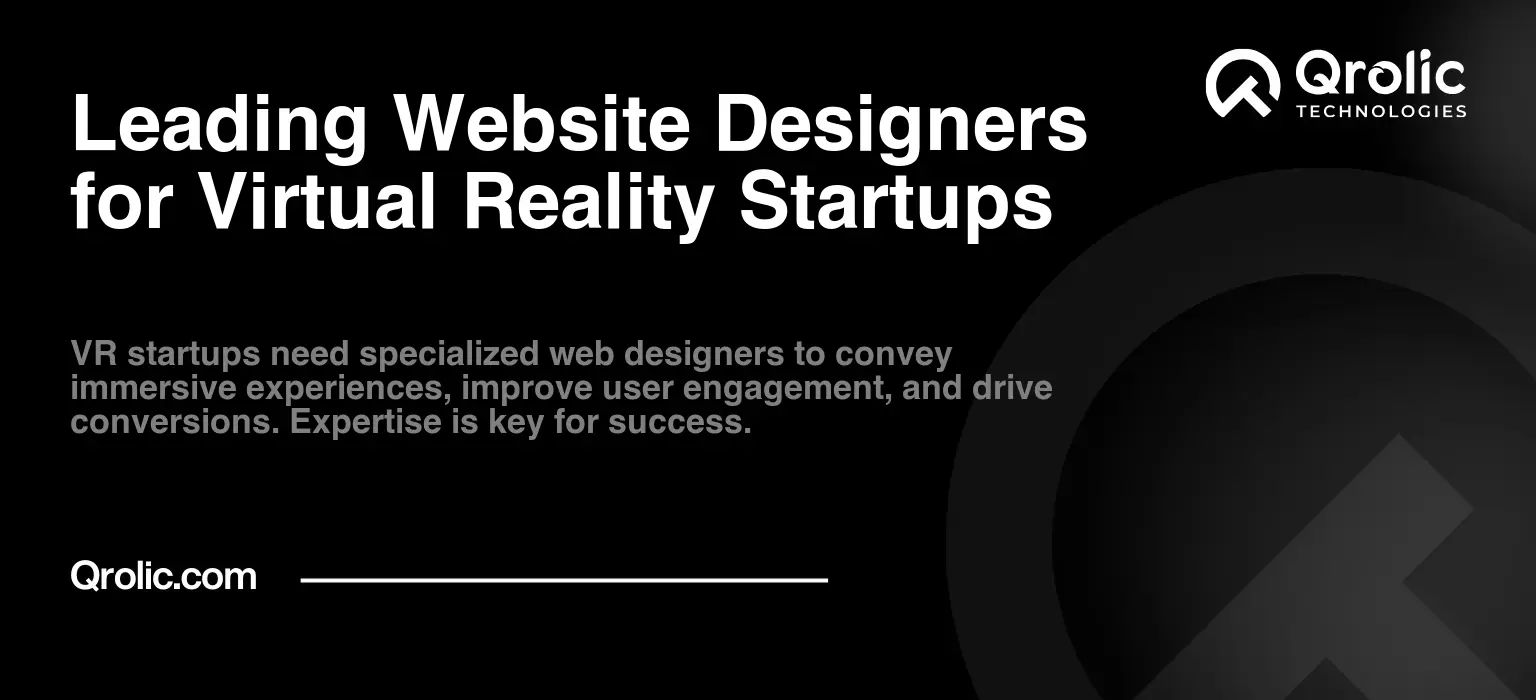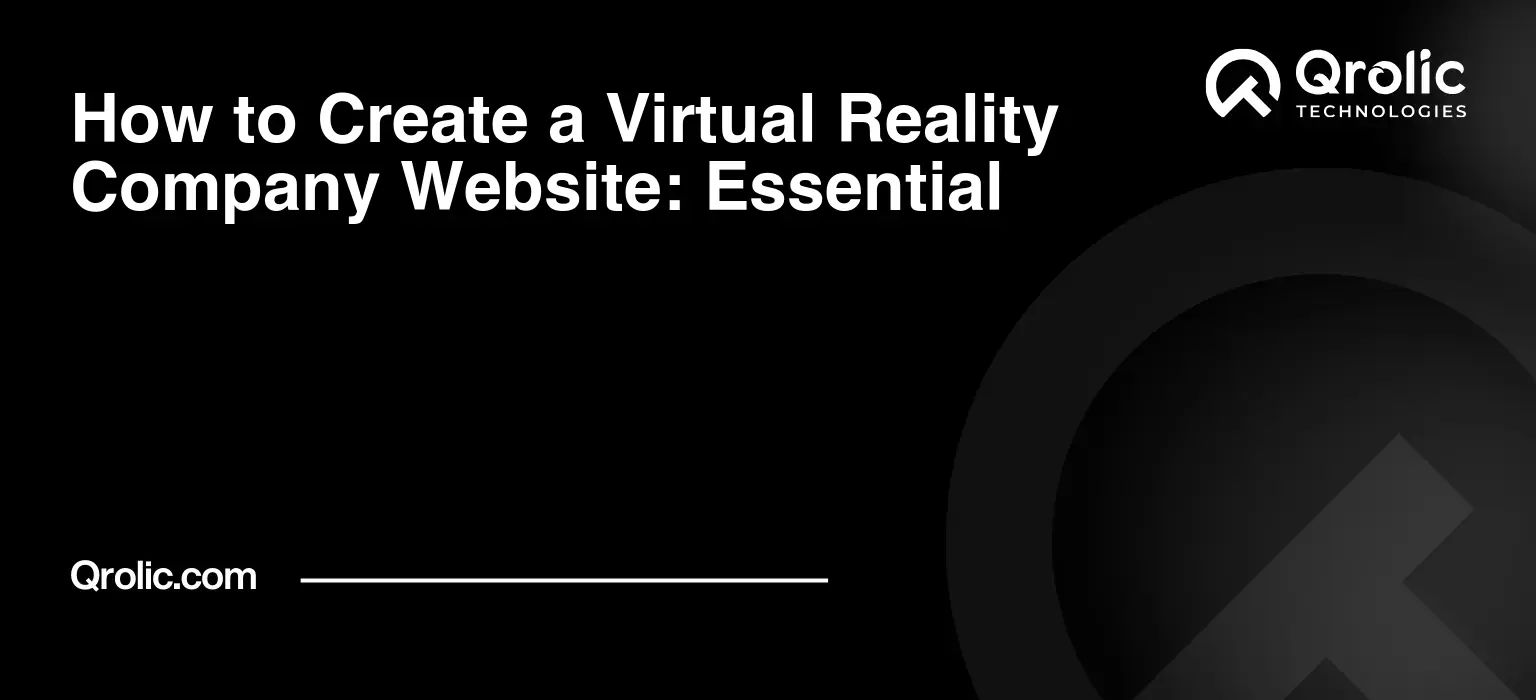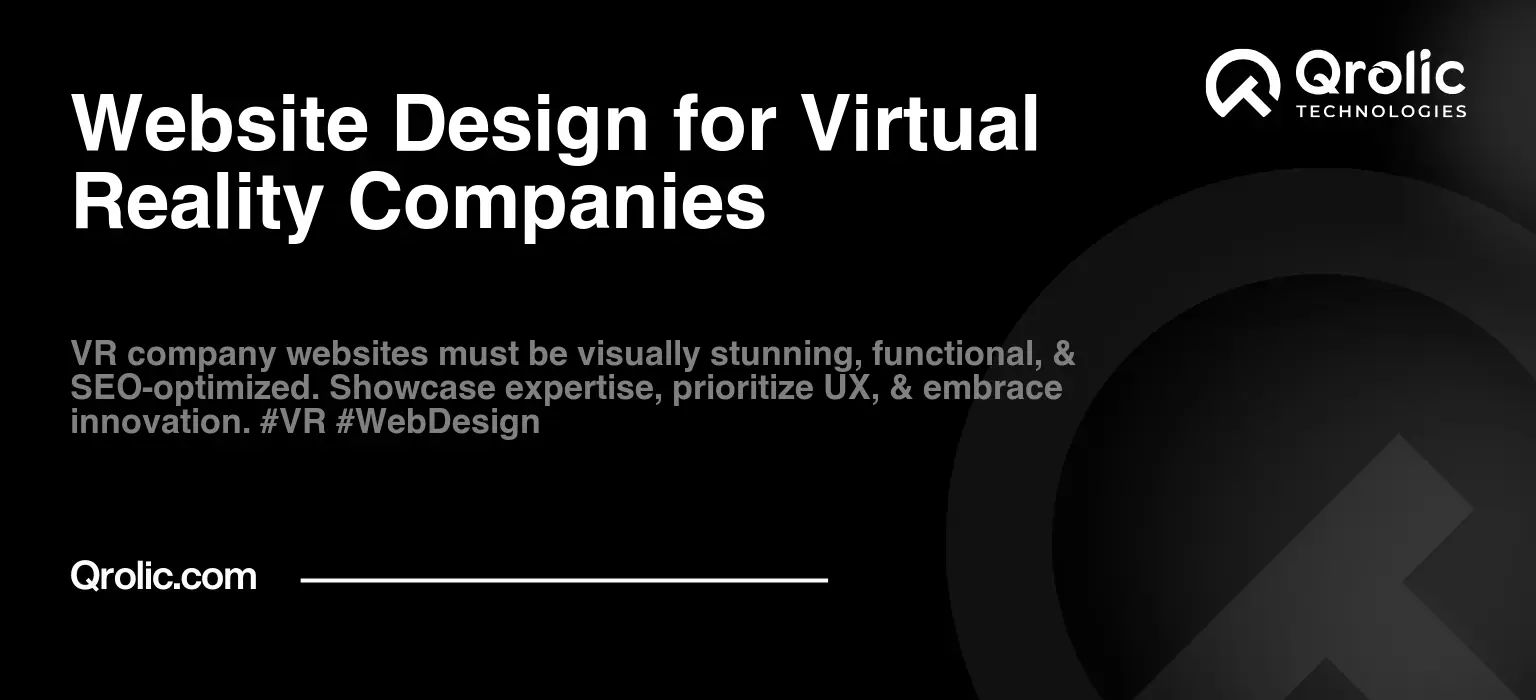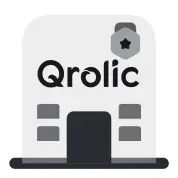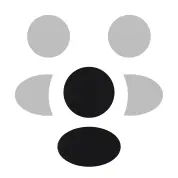The virtual reality (VR) landscape is booming, and if you’re a VR startup, you know that a powerful online presence is absolutely crucial. Your website isn’t just a digital brochure; it’s the first impression, the handshake, and often the deciding factor for potential investors, partners, and customers. In this hyper-competitive market, a mediocre website simply won’t cut it. You need a website that isn’t just visually appealing, but also perfectly embodies the innovative spirit of your VR venture and effectively communicates its unique value proposition. This is where expert website designers specializing in VR startups come into play.
Quick Summary:
- VR startups need specialized website designers.
- They convey experiences, optimize UX, and integrate VR tech.
- Choose designers with VR portfolios and strong technical skills.
- Prioritize interactive demos, clear content, and strong SEO.
Table of Contents
- Why a Specialized Website Designer Matters for VR Startups
- The Unique Challenges of VR Website Design
- Key Benefits of Hiring a VR-Specialized Website Designer
- What to Look for in a Top VR Website Designer
- Portfolio and Previous Experience
- Technical Expertise and Skill Set
- Understanding of User Experience (UX) and User Interface (UI)
- Communication and Collaboration
- Pricing and Budget
- Website Design Strategies Tailored for VR Startups
- Showcase Your VR Experience
- Simplify the Complex
- Prioritize User Engagement
- Optimize for Conversions
- The Importance of SEO for VR Startup Websites
- SEO Strategies Specific to VR
- Why SEO Matters
- Meet Qrolic Technologies: Your Partner in VR Website Design
- Why Choose Qrolic for your VR Startup?
- Qrolic’s Website Design Process
- Let Qrolic Technologies Help You Succeed
- Final Thoughts
Why a Specialized Website Designer Matters for VR Startups
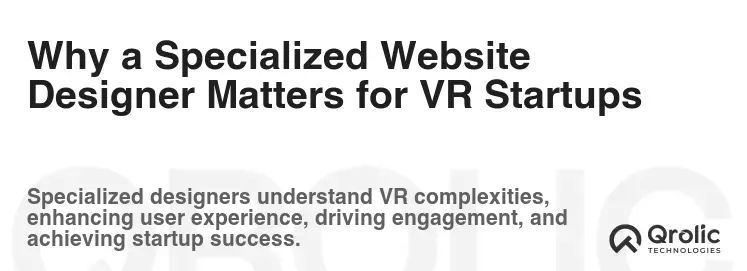
Choosing a generic web designer for your VR startup is like asking a house painter to build a skyscraper. They might understand the basics, but lack the specific expertise and understanding needed for such a specialized task. VR is not just another tech niche; it’s a transformative technology that demands a specific approach to website design. Here’s why:
The Unique Challenges of VR Website Design
- Communicating a Tangible Experience: VR is inherently experiential. You’re selling a feeling, a sense of presence, not just a product. Traditional websites struggle to convey this, often resulting in a disconnect between what you offer and how it’s portrayed online. VR-focused designers understand how to utilize visuals, videos, and even interactive elements to bridge this gap.
- User Experience (UX) Considerations: Navigating a VR website should be intuitive and engaging. Clunky interfaces or confusing information architecture can easily drive potential users away. Designers experienced with VR user patterns can create a website that feels as seamless and immersive as the VR experience itself.
- Visual Storytelling: VR often involves complex concepts and intricate scenarios. Website designers for VR startups excel at crafting compelling visual narratives. They use a combination of high-quality imagery, videos, and animations to not only showcase your VR product but also tell its unique story.
- Mobile Optimization: VR might be an immersive experience but users usually discover it through mobile devices. Having a mobile-first approach in website design is paramount. It ensures accessibility across a wide range of devices, a critical factor for attracting a broader audience.
- Technical Integration: Integrating VR-related content, such as 360-degree videos, interactive simulations, and complex animations, requires technical proficiency. Specialized VR website designers understand these nuances and can seamlessly integrate them into your online platform.
Key Benefits of Hiring a VR-Specialized Website Designer
- Elevated Brand Perception: A professionally designed website signals legitimacy and credibility. It shows that you are invested in your business and that you are serious about your VR innovation.
- Increased Engagement: A well-designed website holds visitors’ attention longer, prompting them to explore your content and learn more about your VR offerings.
- Improved Conversion Rates: By optimizing your website for user experience and incorporating clear calls-to-action, you can effectively convert visitors into leads and customers.
- Future-Proofing your Online Presence: A VR-focused designer will build a website that is scalable, adaptable, and future-proofed to handle the evolving trends of the VR industry.
- Competitive Advantage: In a competitive landscape, your website will stand out, making you a more attractive choice for users and investors.
What to Look for in a Top VR Website Designer
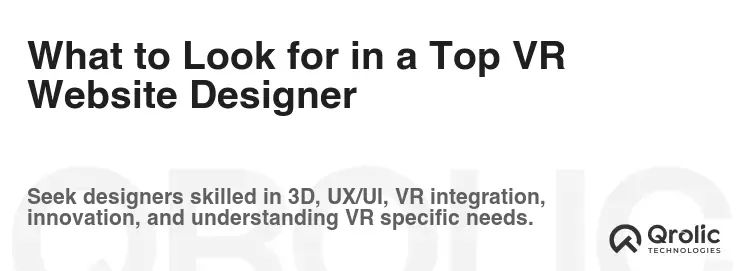
Finding the right website designer for your VR startup is an important decision that requires careful consideration. Here are some key factors to look for:
Portfolio and Previous Experience
- VR-Specific Projects: Scrutinize their portfolio. Look for projects specifically related to VR, augmented reality (AR), or related immersive technologies. This indicates their understanding of the field and their expertise.
- Varied Industries: While VR experience is paramount, having clients in diverse industries can showcase their versatility and problem-solving skills.
- Visual Style: Do their designs align with your brand’s aesthetic? Do they demonstrate a variety of design styles, or do they all look the same? This will give you insight into their creative flexibility.
- Functionality Over Flash: A website might be visually stunning, but if it’s difficult to navigate or doesn’t load quickly, it’s failing its primary purpose. Make sure their designs prioritize both aesthetics and functionality.
Technical Expertise and Skill Set
- Responsive Design: Ensure the designer is proficient in creating websites that adapt seamlessly to different screen sizes (desktops, tablets, and smartphones).
- Front-End Development: Knowledge of HTML, CSS, and JavaScript is vital for creating interactive website elements and a smooth user experience.
- Back-End Integration: If your website requires custom functionalities or database integration, ensure the designer or their team has the required back-end development skills.
- VR-Specific Technology: Familiarity with integrating VR-specific elements like 360-degree videos, WebVR, WebGL, and three.js is crucial for a VR startup’s website.
- Performance Optimization: A VR website can be resource-intensive, especially with videos and animations. The designer should know how to optimize website performance for speed and smooth loading times.
Understanding of User Experience (UX) and User Interface (UI)
- User-Centric Design: A good designer always puts the user first. Look for a portfolio that demonstrates a clear understanding of usability principles and how to guide users through a website effortlessly.
- Information Architecture: A well-structured website with clear navigation is essential. Ensure the designer understands information architecture and can create a logical flow for website visitors.
- Accessibility Standards: A good designer will always design with accessibility in mind, making the website usable by people with disabilities.
Communication and Collaboration
- Clear Communication: You should feel comfortable discussing your vision and asking questions. The designer should be responsive, proactive, and easy to communicate with.
- Collaborative Approach: The best results often stem from close collaboration. The designer should be willing to work alongside your team and incorporate your feedback throughout the design process.
- Transparent Process: The designer should clearly outline their process, timeline, and pricing structure. Transparency builds trust and ensures a smoother collaboration.
Pricing and Budget
- Clear Pricing Structure: Get a clear breakdown of costs, including design fees, development fees, and ongoing maintenance expenses.
- Value Proposition: Don’t always choose the cheapest option. Focus on finding the best value, which includes quality, expertise, and a good working relationship.
- Negotiation: Don’t be afraid to discuss your budget and see if the designer is willing to work within your constraints.
Website Design Strategies Tailored for VR Startups
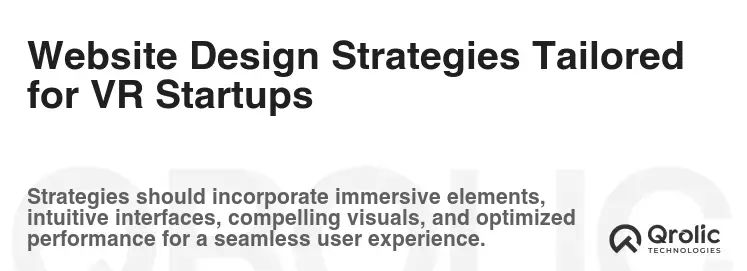
Once you’ve found the right designer, it’s time to focus on the strategies that will make your VR website shine:
Showcase Your VR Experience
- Interactive Demos: Embed interactive 360-degree videos, simulations, or even a small playable VR demo directly onto your website (where technically possible). This allows users to experience the essence of your product firsthand.
- High-Quality Visuals: Use captivating images and videos that showcase your VR experience and its potential. Invest in professional photography and videography to make the best impression.
- User Testimonials: Let your users do the talking! Include written and video testimonials to showcase the positive impact of your VR solution.
- Case Studies: Show, don’t just tell. Showcase specific projects, explain their goals, the challenges, and how your VR solution helped overcome them. Include metrics and data to add credibility.
Simplify the Complex
- Clear and Concise Messaging: Avoid jargon and technical terms that may confuse your audience. Explain the benefits of your VR solution in a simple and relatable way.
- Intuitive Navigation: Make it easy for users to find the information they need. Use clear headings, subheadings, and navigation menus.
- Visual Aids: Use infographics, illustrations, and animations to explain complex processes or concepts visually.
Prioritize User Engagement
- Clear Calls to Action: Guide users towards the desired actions, such as requesting a demo, downloading a brochure, or signing up for a newsletter.
- Interactive Elements: Add interactive elements to your website, such as quizzes, polls, or surveys, to boost user engagement.
- Live Chat Support: Provide live chat support to address users’ questions in real-time.
- Blog Section: Share informative and engaging content through a blog that educates your audience on VR and showcases your expertise.
Optimize for Conversions
- Landing Pages: Create dedicated landing pages for specific campaigns or offers, focusing on targeted messaging and a clear call to action.
- A/B Testing: Continuously test and optimize your website elements, such as headlines, images, and call-to-action buttons, to improve conversion rates.
- Analytics Tracking: Use website analytics to track user behavior, identify areas for improvement, and make data-driven decisions.
- Lead Capture Forms: Implement lead capture forms strategically to collect valuable information from potential customers and nurture them through your sales funnel.
The Importance of SEO for VR Startup Websites
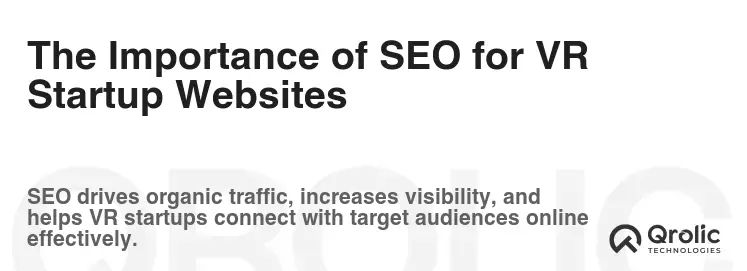
Having a beautiful and functional website is essential, but it’s only half the battle. You also need to make sure it’s discoverable by your target audience. This is where Search Engine Optimization (SEO) comes in.
SEO Strategies Specific to VR
- Keyword Research: Use relevant keywords related to VR, your specific niche (e.g., VR training, VR entertainment), and your target audience’s search queries.
- On-Page Optimization: Optimize your website content, including page titles, meta descriptions, headings, and body text, with your chosen keywords.
- High-Quality Content: Create valuable and informative blog posts, articles, and case studies that are relevant to your target audience and the VR landscape.
- Mobile-First Approach: Google prioritizes mobile-friendly websites. Ensure your website is optimized for mobile devices and loads quickly.
- Link Building: Build high-quality backlinks from reputable websites in the VR industry to increase your website’s authority and ranking.
- Local SEO (if applicable): If you have a physical location or serve a specific geographic area, optimize your website for local searches.
Why SEO Matters
- Increased Visibility: SEO helps you rank higher in search engine results pages (SERPs), making it easier for potential customers to find your website.
- Organic Traffic: SEO drives organic (free) traffic to your website, reducing your reliance on paid advertising.
- Qualified Leads: Organic traffic is often more targeted and likely to convert into leads and customers.
- Cost-Effective Marketing: SEO is a cost-effective marketing strategy that can deliver a high return on investment over the long term.
- Brand Awareness: A higher ranking in search results increases brand visibility and establishes you as a leader in the VR space.
Meet Qrolic Technologies: Your Partner in VR Website Design

Now that you know what goes into crafting an exceptional website for your VR startup, let us introduce you to Qrolic Technologies, a leader in web design and development with a proven track record of success.
Why Choose Qrolic for your VR Startup?
- Specialized Expertise: Qrolic Technologies has extensive experience in designing and developing cutting-edge websites for technology-driven startups, including those in the VR industry. We deeply understand the unique challenges and opportunities of this rapidly evolving field.
- Customized Solutions: We don’t believe in one-size-fits-all solutions. We take the time to understand your specific needs, goals, and brand identity, and create a tailored website that reflects your unique value proposition.
- Cutting-Edge Technology: We leverage the latest web technologies, including HTML5, CSS3, JavaScript frameworks, and WebVR, to deliver visually stunning and technically robust websites. We keep up to date with VR industry to meet future requirements.
- User-Centric Approach: We prioritize user experience (UX) in all our designs, ensuring that your website is intuitive, engaging, and easy to navigate.
- Full-Service Agency: We offer a comprehensive range of services, including website design, development, SEO, digital marketing, and branding, making us your one-stop solution for all your online needs.
- Collaborative Process: We believe in close collaboration with our clients, keeping you involved every step of the way, from initial concept to final launch.
- Proven Results: Our portfolio showcases a proven track record of success in creating high-performing websites that help our clients achieve their business goals.
- Scalable Solutions: We build websites that are scalable and adaptable, allowing them to grow and evolve alongside your business.
Qrolic’s Website Design Process
- Discovery & Planning: We start by gaining a deep understanding of your VR startup, your goals, your target audience, and your brand identity.
- Strategy & Wireframing: Based on the discovery phase, we develop a detailed website strategy and create wireframes to map out the structure and functionality of your site.
- Design & Visuals: We create a visually compelling and engaging website design that reflects your brand and communicates your message effectively.
- Development & Implementation: Our skilled developers bring the designs to life, ensuring that the website is functional, responsive, and optimized for speed and performance.
- Testing & Launch: We rigorously test the website to ensure it’s bug-free and ready for launch. We also provide ongoing support and maintenance to keep your website running smoothly.
- Ongoing optimization: We monitor website performance and user behavior to constantly improve and adapt to any change in market.
Let Qrolic Technologies Help You Succeed
Your website is the cornerstone of your VR startup’s online presence. Investing in a professional website designed by experts who understand the VR landscape is crucial for attracting customers, securing investments, and establishing your brand as a leader in the industry. At Qrolic Technologies, we have the expertise, experience, and passion to help you achieve your goals. Contact us today to discuss your VR startup’s website project and learn how we can help you succeed. We are confident that our team can turn your vision into a reality. Visit our website at https://qrolic.com/ to learn more about our services.
Final Thoughts
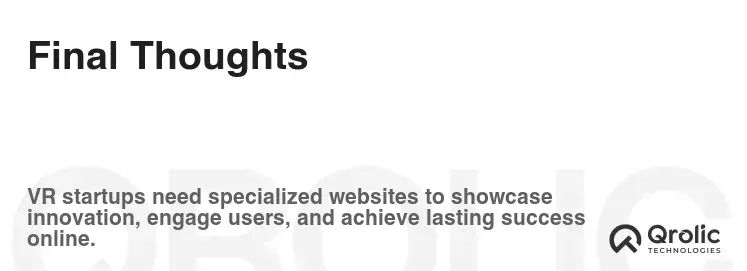
Designing a website for a VR startup is a unique challenge that requires specialized knowledge and expertise. It’s not just about having a pretty site, but a site that effectively communicates the immersive experience of VR, engages users, and drives business results. By carefully choosing a website designer who understands the nuances of the VR industry, implementing tailored design strategies, and optimizing for SEO, you can create a website that positions your startup for success. Remember, your website is often the first interaction potential customers have with your VR venture, so make it count.
